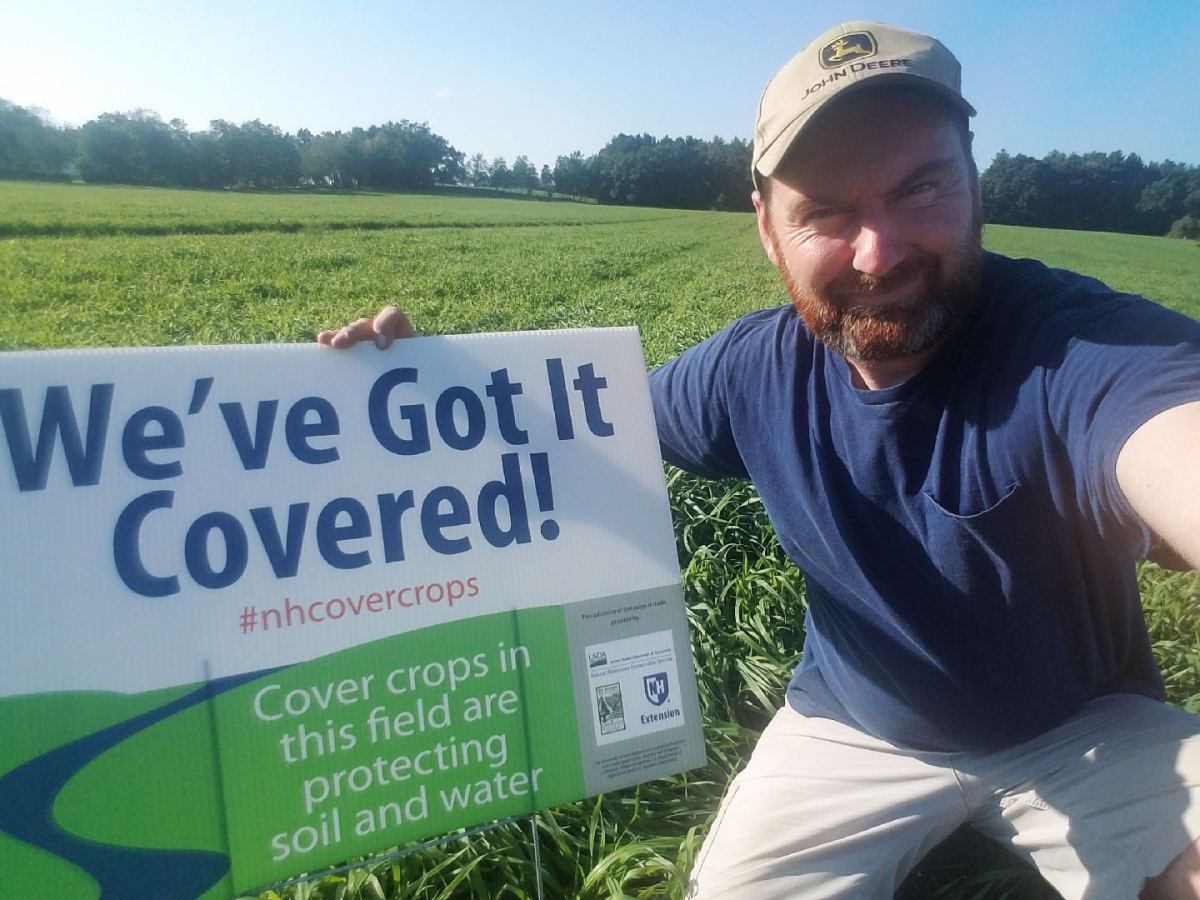We’ve Got It Covered

There are plenty of things for busy farmers like Jamie Robertson to worry about. But soil health and resource management? He’s got it covered.
“Cover cropping is a good thing to do and it’s a healthy thing to do,” says Robertson, of Bohanan Farm in Contoocook.
Cover crops are crops like clover, vetch or rye that are planted between cropping seasons. They help reduce soil erosion and runoff into surrounding waters and keep nutrients in the field to nourish next year’s crop. Without cover crops, a barren field will lose topsoil and nutrients to wind and rain. Cover crops are one of the many unsung heroes of agriculture.
This fall, cover crops and the farmers who plant them are getting their time in the spotlight. The N.H. Cover Crops Team, which includes farmers, NRCS-USDA, the N.H. Association of Conservation Districts and UNH Cooperative Extension, is celebrating cover crops with We’ve Got It Covered, a multimedia campaign using field signs, blogs, and social media to recognize the farmers who plant cover crops — and encourage others to do the same.
Carl Majewski, an Extension food and agriculture field specialist, estimates about 50 percent of farms across New Hampshire use cover crops. That number is higher than it was 10 years ago — but, he adds, “there’s plenty of opportunities to do more.” We’ve Got It Covered invites farmers to share photos of their cover crops on social media with the #nhcovercrops hashtag.
Soil health means more than just fertile soil, according to Majewski. Healthy soils are in good condition and biologically active and full of nutrients. These nutrients tend to be concentrated in the top layers of soil, the area most vulnerable to erosion. Crops of clover provide a vegetative cover that keeps soil in place, holds on to nutrients and keeps the soil ready for future growing seasons.

Cover crops also save farmers money and conserve resources. “Research indicates having a soil cover saves the equivalent of about 50 pounds of nitrogen fertilizer,” Majewski adds. “As fertilizer prices fluctuate, that can add up.”
There are huge benefits for the public, too. When nutrients leach away from soil, they sometimes find their way to local water supplies, streams, lakes and ponds. While those nutrients are great for soil, they’re not great for water, where they become a contaminant. Cover crops help prevent that.
At Bohanan Farm, cover cropping just makes sense, according to Robertson. “We’re doing it to try and improve our soil health, but it’s also a better way to utilize our manure spreading. And we also harvest the crop in the spring as a forage for our cows, so we’re also double-cropping,” he says. “It’s beneficial for the soil, beneficial for the farm, and it gives us a chance to farm fewer acres more intensely.”
Letting the public know farmers have it covered is important, too. “I hope they see the signs and understand how hard we work with the environment, to constantly improve it and make a living from it,” Robertson says. “I hope they feel good about living next to farms that are worried about water quality, soil health and leaving the place in better shape than how it started.”
Want to participate in We’ve Got It Covered? Stop by your local UNH Cooperative Extension, NRCS or Conservation District office and pick up a sign. You can also follow along on social media using the #nhcovercrops hashtag or stop by your local farm.